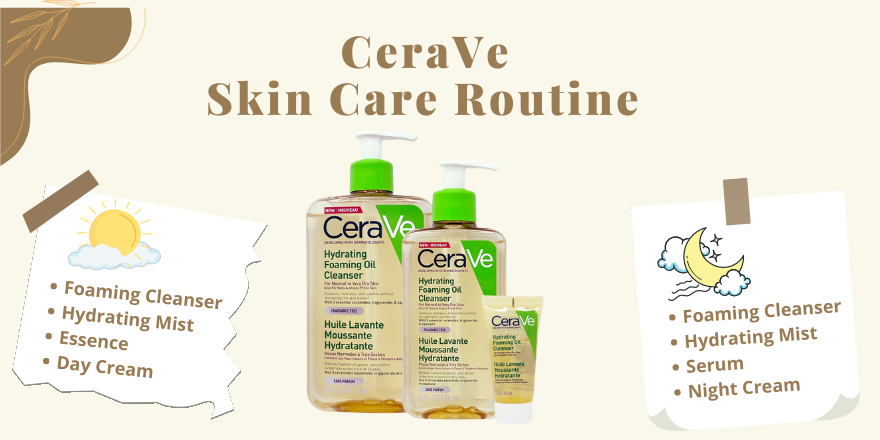Incorporating AHA and BHA
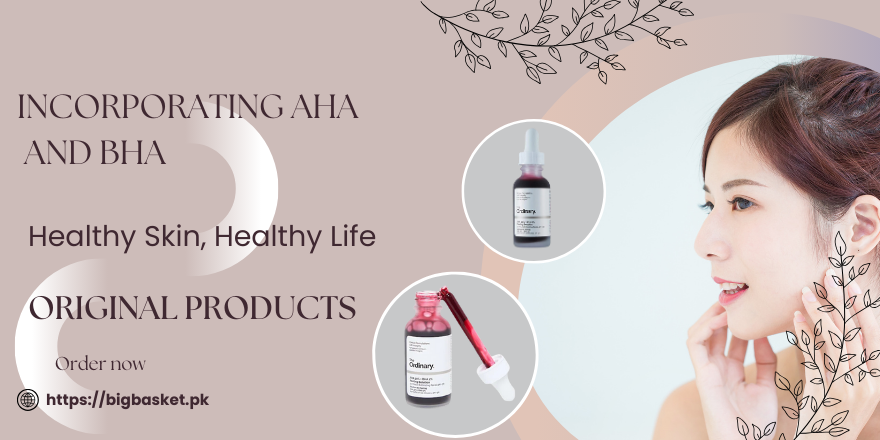
Achieving healthy and glowing skin is a goal that most of us strive for, and incorporating active ingredients into our skincare routine is a crucial step towards that. Alpha Hydroxy Acids (AHA) and Beta Hydroxy Acids (BHA) are two of the most effective chemical exfoliants that can help you achieve your desired complexion.
These powerful ingredients work by gently dissolving dead skin cells, unclogging pores, and revealing brighter and smoother skin. However, with a plethora of AHA and BHA products available in the market, it can be overwhelming and confusing to choose the right one for your skin type. That’s why we have created this step-by-step guide to help you incorporate AHA and BHA into your skincare routine.
From understanding the difference between AHA and BHA to learning how and when to use them, this guide will provide you with all the essential information you need to elevate your skincare game and achieve a healthier, clearer, and brighter complexion. So, let’s dive into the world of AHA and BHA and uncover the secrets to radiant skin.
Understanding the benefits of AHA/BHA.
Alpha hydroxy acids (AHAs) and beta hydroxy acids (BHAs) are two types of chemical exfoliants commonly used in skincare products. AHAs, such as glycolic acid and lactic acid, gently exfoliate the skin’s surface, promoting cell turnover and revealing a brighter complexion. They are particularly effective at reducing the appearance of fine lines, wrinkles, and sun damage.
On the other hand, BHAs, such as salicylic acid, penetrate deeper into the pores, making them ideal for treating acne-prone and oily skin. BHAs can help unclog pores, reduce inflammation, and regulate excess oil production. Both AHA and BHA have their unique benefits, and incorporating them into your skincare routine can lead to smoother, healthier-looking skin. It is important to note that AHA and BHA products may increase sun sensitivity, so it is vital to wear sunscreen daily when using them.
Choosing the right products.
When it comes to incorporating AHA and BHA into your skincare routine, choosing the right products is essential. With a wide range of options available in the market, it can be overwhelming to know which ones will work best for your skin type and concerns. Firstly, consider your skin’s needs. If you have dry or sensitive skin, opting for a gentle AHA product with a lower concentration may be more suitable.
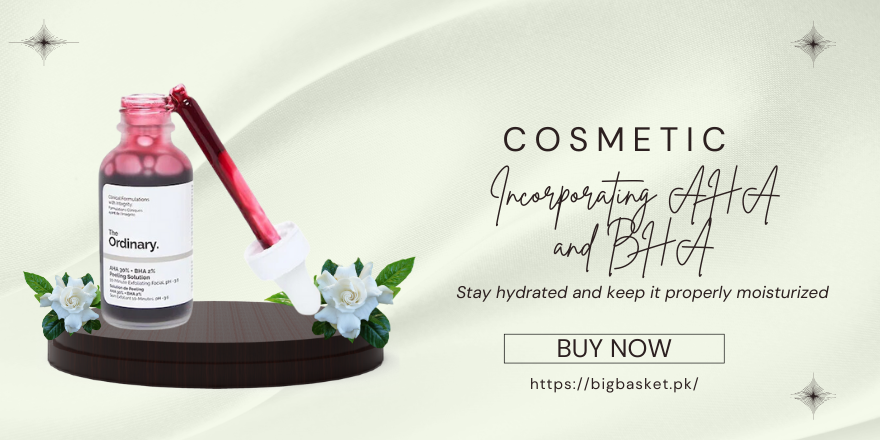
On the other hand, if you struggle with acne or oily skin, a BHA product with salicylic acid could be more effective in targeting your specific concerns. Additionally, it’s crucial to read product labels and look for reputable brands that use high-quality ingredients. Look for products that are formulated with a pH level between 3 and 4, as this ensures optimal effectiveness.
Lastly, consider starting with a patch test before incorporating any new products into your routine to avoid any potential irritations or adverse reactions. By carefully selecting the right AHA and BHA products, you can enhance the effectiveness of your skincare routine and achieve the desired results for your skin.
Incorporating AHA/BHA into your routine.
Incorporating AHA and BHA into your skincare routine can greatly benefit your skin’s overall health and appearance. These exfoliating acids can dissolve dead skin cells, unclog pores, and promote cellular turnover, resulting in a more radiant and smoother complexion. To begin, cleanse your face thoroughly with a gentle cleanser to remove any dirt or impurities. Then, apply a toner to balance the skin’s pH levels and prepare it for the exfoliating acids. Next, apply your chosen AHA or BHA product, being mindful of the concentration and instructions provided by the manufacturer.
Allow the product to absorb into the skin for a few minutes before proceeding with the rest of your skincare routine. It’s important to note that these acids can temporarily increase the skin’s sensitivity to the sun, so remember to apply a broad-spectrum sunscreen during the day to protect your skin. Over time, with consistent use and proper application, incorporating AHA and BHA into your skincare routine can help to improve skin texture, minimize the appearance of blemishes and fine lines, and promote a healthier complexion.
Maximize skincare benefits with AHA/BHA.
Alpha hydroxy acids (AHAs) and beta hydroxy acids (BHAs) are powerful exfoliating ingredients that offer numerous benefits for the skin. AHAs, such as glycolic acid and lactic acid, work by gently dissolving the bonds between dead skin cells, promoting cell turnover and revealing a smoother, brighter complexion. On the other hand, BHAs, like salicylic acid, penetrate deeper into the pores, effectively unclogging them and reducing the appearance of blackheads and acne.
By incorporating both AHA and BHA products into your skincare routine, you can maximize the benefits of exfoliation and target multiple skin concerns simultaneously. However, it’s important to introduce these ingredients gradually and monitor your skin’s response to avoid any potential irritation. Additionally, it’s essential to always follow up with a broad-spectrum sunscreen as AHAs and BHAs can increase skin sensitivity to the sun.
Consult with a dermatologist.
For personalized guidance and recommendations tailored to your specific skin concerns, it is highly recommended to consult with a dermatologist. A dermatologist is a medical professional specializing in skincare and can provide expert advice on incorporating AHA and BHA products into your routine. They can assess your skin type, address any underlying conditions or sensitivities, and recommend the most suitable products and application methods.
Additionally, a dermatologist can guide you on the appropriate concentration and frequency of use based on your unique skin needs. Consulting with a dermatologist ensures that you receive professional guidance to achieve optimal results while minimizing the risk of any potential side effects.
Consult with a dermatologist.
For personalized guidance and recommendations tailored to your specific skin concerns, it is highly recommended to consult with a dermatologist. A dermatologist is a medical professional specializing in skincare and can provide expert advice on incorporating AHA and BHA products into your routine. They can assess your skin type, address any underlying conditions or sensitivities, and recommend the most suitable products and application methods.
Additionally, a dermatologist can guide you on the appropriate concentration and frequency of use based on your unique skin needs. Consulting with a dermatologist ensures that you receive professional guidance to achieve optimal results while minimizing the risk of any potential side effects.
Consider your skin type first.
Understanding your skin type is crucial when it comes to incorporating AHA and BHA into your skincare routine. Every individual has a unique skin type, whether it’s dry, oily, combination, sensitive, or acne-prone. Each type requires specific ingredients and formulations to address its specific needs and concerns. By considering your skin type first, you can determine which AHA and BHA products will work best for you.
For example, if you have dry skin, you may benefit from a gentle AHA exfoliant that provides hydration, while those with oily or acne-prone skin may require a BHA product to unclog pores and reduce breakouts. By tailoring your skincare routine to your specific skin type, you can ensure that you are providing your skin with the right ingredients to achieve optimal results.
Start slow and monitor progress.
It is advisable to start incorporating AHA and BHA products into your skincare routine gradually and monitor the progress of your skin. Introducing these exfoliating ingredients too quickly or using them too frequently can potentially cause irritation or sensitivity, especially for those with sensitive or reactive skin. Begin by using AHA or BHA products once or twice a week and gradually increase the frequency as your skin adjusts.
Pay close attention to how your skin reacts, looking out for any signs of redness, dryness, or discomfort. If any adverse effects occur, it may be necessary to reduce the frequency or concentration of the product. Regularly assessing your skin’s response will allow you to tailor your routine for optimal effectiveness and minimize the risk of any unwanted side effects.
Potential side effects of using AHA and BHA
It is important to note that while AHA and BHA can provide numerous benefits for the skin, there are potential side effects that users should be aware of. One common side effect is skin irritation, which can manifest as redness, itching, or a burning sensation. This is particularly true for individuals with sensitive skin or those who use products with high concentrations of AHA or BHA.
Another possible side effect is increased sun sensitivity, as these acids can make the skin more susceptible to UV damage. Therefore, it is crucial to use sunscreen when incorporating AHA and BHA into your skincare routine. Lastly, some individuals may experience dryness or flakiness due to the exfoliating properties of these acids, especially when used excessively or without proper hydration. As with any skincare ingredient, it is recommended to start with lower concentrations and gradually increase usage to minimize the risk of side effects
Understanding the risks of AHA/BHA
When incorporating AHA and BHA into your skincare routine, it is important to have a thorough understanding of the potential risks involved. While these acids offer significant benefits for skin health, they can also lead to side effects if not used properly. One potential risk is over-exfoliation, which can occur when individuals use AHA and BHA products too frequently or in high concentrations.
Over-exfoliation can disrupt the skin’s natural barrier function and result in dryness, flakiness, and increased sensitivity. It is essential to follow product instructions and recommendations from skincare professionals to avoid these adverse effects. Additionally, individuals with sensitive skin may be more prone to experiencing irritation or redness when using AHA and BHA.
It is advisable to perform a patch test before incorporating these acids into your routine and to start with lower concentrations to minimize the risk of irritation. Understanding the potential risks and taking appropriate precautions will help ensure a positive experience when using AHA and BHA in your skincare regimen.
Proper usage for optimal results
To ensure optimal results when using AHA and BHA in your skincare routine, it is crucial to follow proper usage guidelines. Firstly, it is recommended to start with a lower concentration of these acids, especially if you have sensitive skin. Gradually increase the concentration over time as your skin becomes more accustomed to the exfoliating effects.
Additionally, it is important to use AHA and BHA products as directed, typically applying them once or twice a week initially, and then adjusting the frequency based on your skin’s response. Avoid over-exfoliation by not using these products on consecutive days or in combination with other exfoliating ingredients. It is also essential to remember to moisturize and protect your skin with sunscreen, as these acids can make your skin more sensitive to the sun. By following these guidelines, you can maximize the benefits of AHA and BHA while minimizing the risk of side effects.
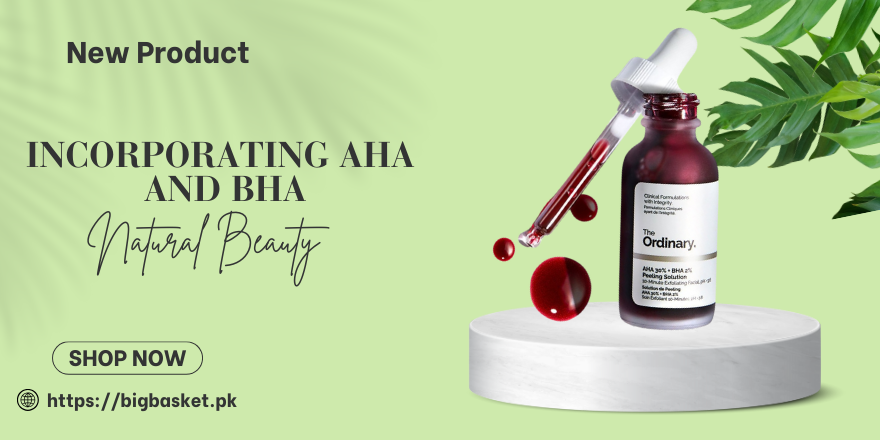
while AHA and BHA have numerous benefits for the skin, it is important to use them in moderation and according to your skin type. It is also crucial to use them as directed and to follow up with proper hydration and sun protection. As with any skincare product, it is always advisable to do a patch test before incorporating AHA and BHA into your routine.
Consulting with a dermatologist can also help guide you in finding the right products and avoiding any potential side effects. Used correctly, AHA and BHA can be powerful tools in achieving healthy, radiant skin.
Patch test before full application.
Before applying any skincare products containing AHA (alpha hydroxy acids) or BHA (beta hydroxy acids), it is crucial to conduct a patch test to ensure compatibility with your skin. This simple precautionary step helps to determine any potential adverse reactions or sensitivities before committing to a full application.
To perform a patch test, apply a small amount of the product to a discreet area of skin, such as the inner arm or behind the ear, and observe for any signs of redness, irritation, or inflammation. Ideally, this patch test should be conducted at least 24 hours before using the product on your face or other sensitive areas. Remember, everyone’s skin is unique, and even if you have used similar products in the past, it is essential to patch-test each new formulation to prioritize the health and well-being of your skin.
Gradually introduce it into a skincare routine.
To ensure optimal results and minimize the potential for skin irritation or adverse reactions, it is recommended to gradually introduce skincare products containing AHA and BHA into your routine. This gradual approach allows your skin to acclimate to the active ingredients and reduces the likelihood of overwhelming your skin with too much exfoliation. Begin by using the product once or twice a week, monitoring how your skin responds.
If no adverse effects are observed after a week or two, you can gradually increase the frequency of use. However, it is important to avoid using AHA and BHA products on consecutive days initially, as this can lead to overexfoliation and skin sensitivity.
Additionally, always remember to follow the instructions provided by the product manufacturer and consult with a dermatologist if you have any concerns or specific skin conditions. By gradually incorporating AHA and BHA products into your skincare routine, you can enjoy their benefits while minimizing the potential risks.
Use sunscreen to prevent irritation.
When using skincare products containing AHA and BHA, it is crucial to protect your skin from potential irritation and sensitivity by incorporating sunscreen into your daily routine. Sunscreen acts as a barrier that shields your skin from harmful UV rays, which can exacerbate any existing irritation or sensitivity caused by the exfoliating properties of AHA and BHA.
By applying a broad-spectrum sunscreen with an appropriate sun protection factor (SPF), you can help prevent further damage to your skin and maintain its overall health. Remember to reapply sunscreen every two hours, especially when exposed to direct sunlight. This simple precaution will not only protect your skin from potential irritation but also enhance the effectiveness of your AHA and BHA skincare routine.
Effective exfoliation for youthful skin.
Regular exfoliation is a crucial step in maintaining youthful and radiant skin. By removing dead skin cells and promoting cellular turnover, exfoliation helps to reveal a fresh and vibrant complexion. While there are various methods of exfoliation available, one effective approach is the use of alpha hydroxy acids (AHAs) and beta hydroxy acids (BHAs). AHAs, such as glycolic acid and lactic acid, work by gently dissolving the bonds between dead skin cells, making them easier to slough off.
BHAs, like salicylic acid, penetrate deep into the pores, effectively removing excess oil and debris. Incorporating AHAs and BHAs into your skincare routine can help minimize the appearance of fine lines, wrinkles, and hyperpigmentation, giving you a smoother and more youthful complexion. It’s important to note, however, that exfoliation should be done in moderation and tailored to your skin type and sensitivity.
Consulting with a skincare professional can help determine the most suitable exfoliation method and frequency for your specific needs, ensuring optimal results without compromising the skin’s barrier function.
The power of AHA and BHA.
AHAs and BHAs possess powerful properties that can significantly benefit the skin, making them valuable additions to any skincare routine. AHAs, such as glycolic acid and lactic acid, work by gently exfoliating the skin’s surface, removing dead skin cells and promoting cell turnover. This process helps to improve the texture and tone of the skin, reducing the appearance of fine lines, wrinkles, and hyperpigmentation.
On the other hand, BHAs, such as salicylic acid, penetrate deep into the pores, effectively unclogging them and reducing excess oil production. This makes BHA particularly useful for individuals with acne-prone or congested skin. By incorporating products containing AHAs and BHAs into your skincare regimen, you can harness their power to achieve a smoother, more youthful complexion.
However, it is essential to exercise caution and ensure that the products you use are suitable for your skin type and sensitivity. Consulting with a skin care professional can help determine the most appropriate concentration and frequency of use for optimal results.
Transform your skincare routine today.
To optimize the health and appearance of your skin, it is important to regularly reassess and update your skincare routine. By incorporating high-quality products tailored to your specific needs, you can transform your skincare routine and achieve noticeable results. Whether you are seeking to address concerns such as dryness, dullness, or signs of aging, there are a multitude of innovative skincare options available to you.
From serums infused with potent antioxidants to moisturizers enriched with hydrating ingredients, the key is to identify the right products that will nourish and protect your skin. By taking the time to invest in a comprehensive skincare routine, you can effectively address your unique concerns and maintain a radiant and youthful complexion.
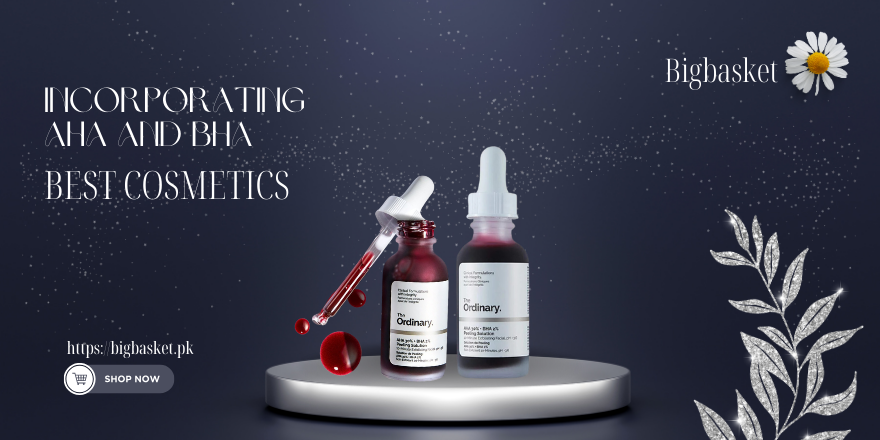
The use of AHA and BHA in anti-aging skincare routines has shown promising results. These chemical exfoliants not only help with diminishing fine lines and wrinkles but also improve skin texture and overall appearance. It is important to consult with a skincare professional to determine the best products and usage for your unique skin concerns. With continued use and proper guidance, AHA and BHA can be effective tools in achieving a youthful and radiant complexion.
FAQ’s
What are AHA and BHA?
AHA (Alpha Hydroxy Acid): It’s a water-soluble acid found in various fruits and milk. Examples include glycolic acid (from sugar cane) and lactic acid (from milk). They work by gently exfoliating the skin.
BHA (Beta Hydroxy Acid): This is an oil-soluble acid, commonly represented by salicylic acid derived from willow tree bark. BHAs penetrate oil in pores, making them effective in treating acne and unclogging pores.
How do AHAs and BHAs benefit the skin?
Exfoliation: AHAs and BHAs remove dead skin cells, promoting smoother and brighter skin.
Pore Cleansing: BHAs are especially effective at cleaning out pores, and reducing acne and blackheads.
Improving Texture: AHAs promote collagen production, reducing fine lines and wrinkles.
Brightening: AHAs help reduce pigmentation, evening out the skin tone.
Who should use AHAs and BHAs?Acne-prone Skin: BHAs are beneficial for treating and preventing breakouts.
Aging Skin: AHAs aid in minimizing fine lines and improving skin texture.
Uneven Skin Tone: AHAs can brighten and even out skin tone.
Are there any precautions when using AHAs and BHAs?
Start Gradually: Begin with lower concentrations to avoid potential irritation.
Patch Test: Test a small area before applying it all over to check for adverse reactions.
Sun Protection: Always use sunscreen when using AHAs or BHAs as they can increase sun sensitivity.
How should I include AHAs and BHAs in my skincare routine?
Follow Instructions: Use products as directed and avoid mixing with potentially irritating products.
Increase Usage Gradually: Start with a lower frequency and gradually increase usage as your skin adjusts.
Consistency: For best results, incorporate AHAs and BHAs regularly into your skincare routine
No products found








